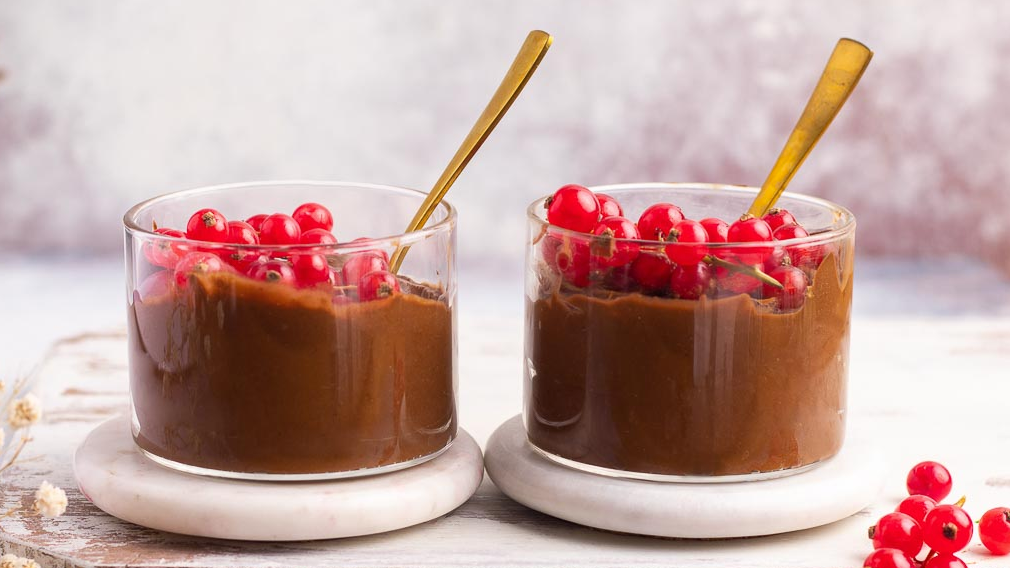How Chefs Make Vegan Desserts Taste Decadent
Vegan desserts emulate the richness of dairy with clever substitutes.
Indulging our sweet tooth is one of life's little pleasures, but with the prevalence of dairy allergies and the rise of the vegan lifestyle, many of us are looking for tasty desserts that fit their dietary needs. Thankfully, chefs and bakers have long risen to the challenge and found innovative ways to make vegan desserts every bit as decadent and delicious as those made with animal products. The key is knowing how to combine textures and flavors to evoke the rich creaminess we expect.
When tackling vegan baking, chefs often rely on substitutes such as plant-based milks, fruits, and natural sweeteners rather than cow's milk, eggs, and refined sugar (yes, the latter is often processed with animal bones). Almond and coconut milk have a subtle, naturally sweet flavor and high fat content, which makes them capable of forming the base for puddings, custards, and ice cream.
But desserts are defined by more than their sweetness, and when you want vegan dishes to taste truly decadent, turning to nuts and seeds is the key. Cashews, for example, can be soaked and blended to form an ultra-smooth puree that substitutes nicely for everything from butter to cheese in various desserts.
Farrah Bezner, CMO of Brooklyn-based confectionery Joyva, highlights tahini as the key ingredient for a wide range of vegan desserts. Made entirely from roasted sesame seeds, this nutty spread can add depth of flavor to any dish where it might otherwise be lacking, vegan or not.
"You can swirl on top of your favorite vegan ice cream or make a decadent hot chocolate treat," Bezner tells The Takeout. (Here's that recipe, which can be made with a non-dairy alternative if desired.)
Pistachios, too, make a great substitute. Just ask Asia Capilungo, the co-founder of her namesake Puglian-inspired café and wine bar in London, which is popular for its pistachio hot chocolate filled with pistachio cream and a thick blend of vegan white chocolate.
"Pistachios are used to create a paste, giving a thick texture to the hot chocolate," Capilungo explains. "The vegan white chocolate made of plant-based ingredients also helps to reach a thicker texture, unlike regular ingredients—cocoa, butter, sugar—and the use of oat milk gives a creamy, smooth finish."
Beyond milks and fats, fruits add not just sweetness, but crucial moisture. Ripe bananas work beautifully in cakes and muffins, while applesauce substitutes for eggs in many baked goods. Dates are commonly pureed with their soaking liquid to make a sticky-sweet binder for dessert bars and truffles. And for Rizwan Asad, the founder of Chocolates & Chai, the secret weapon is avocado.
"Avocado is a great alternative to bring about a creaminess to vegan chocolate recipes, while nut butters bring a lovely richness and their own flavor profiles," Asad said.
For his famous vegan chocolate mousse, Asad creates a decadent recipe with only five ingredients: avocado, cocoa powder, syrup, salt, and vanilla. Many people start from the assumption that vegan recipes must be more complicated than their traditional counterparts, but Asad explains that the key is nothing more elaborate than having quality ingredients on hand.
"You don't need special equipment to make successful vegan recipes," he says. "Invest in good quality ingredients available to you, whether that's using vegan chocolate, or cocoa butter, or vegan cocoa powder. Cheaper substitutes here can definitely impact the final texture and taste."
